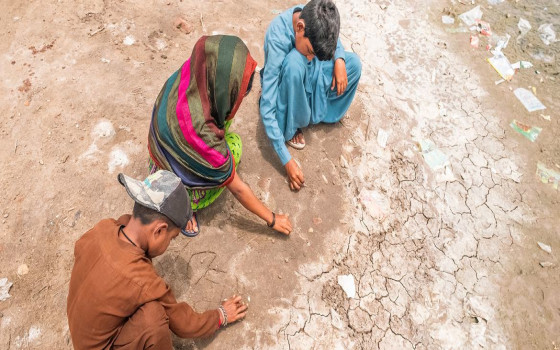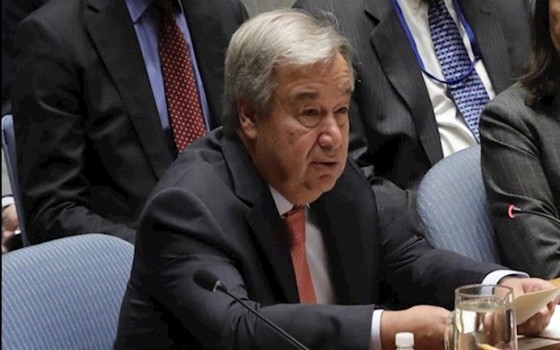
UNICEF: Nearly half a billion children experience more hot days than their grandparents

- Europe and Arabs
- Thursday , 15 August 2024 13:10 PM GMT
New York: Europe and the Arabs
The United Nations Children's Fund (UNICEF) said that one-fifth of the world's children, or nearly half a billion children, live in areas that experience at least twice as many hot days annually as they did just six decades ago. According to the UN daily news bulletin, a copy of which we received this morning, which added, "This came in a new analysis conducted by the UN organization and published yesterday, Wednesday, which compares the average of the 1960s with the average of the period between 2020-2024, to issue a severe warning about the speed and scope of the increase in extremely hot days, i.e. those in which the temperature exceeds 35 degrees Celsius, in areas where 466 million children live in the world, many of which lack the infrastructure or services necessary to bear this suffering.
UNICEF Executive Director Catherine Russell said that the hottest summer days have become normal today, adding that "extreme heat is constantly increasing, harming children's health, well-being and daily routine."
UNICEF's analysis concluded that children in 16 Countries today face more than 30 more days of extreme heat than children did six decades ago.
In South Sudan, for example, children in the current decade are experiencing an average of 165 extremely hot days per year, compared to 110 days in the 1960s, while in Paraguay this rate has jumped from 36 to 71 days.
Threats to the health of children and pregnant women
The analysis showed that children in West and Central Africa are experiencing the highest frequency of exposure to extreme heat and the largest increase in the number of days over time, with 123 million children, or 39 percent, experiencing more than a third of the days of the year on average with temperatures above 35 degrees Celsius. In Sudan, for example, this rate reaches 195 days.
UNICEF stressed that heat stress, caused by exposure to extreme heat, poses an unprecedented threat to the health and well-being of children and pregnant women, especially if cooling is not available.
Increasing levels of heat stress also contribute to malnutrition and non-communicable diseases in children, including heat-related illnesses, and make children more vulnerable to infectious diseases that spread more in high temperatures, such as malaria and dengue fever.
Evidence also shows that it also affects neurological development, mental health and well-being, according to UNICEF, which warned that extreme heat has more worrying effects when exposed to it for longer periods.
It added that there are 100 countries today where more than half of their children suffer from heat waves at a rate twice as high as it was 60 years ago.
More dangerous for children
UNICEF indicated that in the coming months, all countries that signed the Paris Climate Agreement must submit new national climate plans, which are the Nationally Determined Contributions, calling on leaders, governments and the private sector to seize this opportunity to implement urgent and bold climate measures that support every child’s right to a clean, healthy and sustainable environment through a number of steps.
The first of these steps is to reduce emissions and implement ambitious international agreements in the field of sustainability and climate change, with the need to stop the rise in temperatures.
The second step is to protect the lives, health and well-being of children, and the resilience of their communities, including by adapting basic social services to a constantly changing climate, more frequent disasters and a deteriorating environment. The third step is to empower all children throughout their lives to become environmental champions, by providing them with development opportunities, education and skills.
The UNICEF Executive Director said that children are not small adults. Their bodies are more vulnerable to extreme heat, and they heat up more quickly and cool down more slowly.
She added: “Extreme heat is especially dangerous for babies, because their heart rates are higher, so high temperatures are more dangerous for children.”












No Comments Found